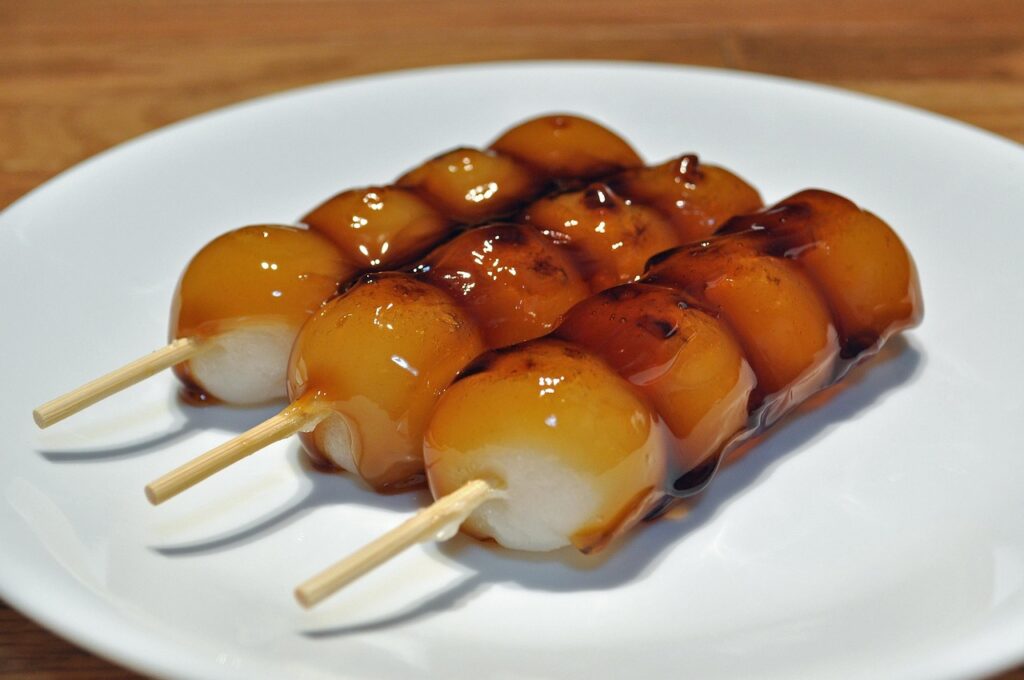
Have you been watching those Mitarashi Dango videos on TikTok? You know the ones - those cute, chewy Japanese rice balls on sticks that make your mouth water instantly. We've got you covered! At Spoonful of Asia, we turn viral food videos into real recipes for your kitchen.

Let's be honest. It's late at night. You're scrolling on your phone. Suddenly you see perfect little rice dumplings bouncing across your screen. They look amazing! But where do you start? What's rice flour? Where do you buy mirin?
That's why Spoonful of Asia exists. We find popular food videos and break them down step by step. No fancy tools needed. No hard-to-find items. Just clear steps to bring global flavors to your table.
Today's star is dango - those sweet, chewy Japanese treats taking over your social feeds. This recipe has over 50 million views! What makes it special? It uses tofu for amazing texture. The result? Soft, bouncy dango that your kids will beg for again and again.
The best part about this recipe? It costs less than $10 - much cheaper than buying them at a shop. It takes about 30 minutes to make. Perfect for a Sunday afternoon when the kids are actually playing nicely together.
So put down your phone. Grab some simple items from the store. Get ready to bring Japan to your kitchen. By the end of this post, you'll make viral dumplings that will wow your family with your cooking skills!
Let's take a quick trip to Japan without the long flight! Dango are Japanese rice dumplings loved for hundreds of years - long before TikTok made them famous. Think of them as Japan's version of donut holes, but with a chewy, bouncy texture that's super addictive.
They come on bamboo sticks with 3-5 balls per stick. Often they're coated in sweet sauce.
While we reach for cookies after dinner, Japanese families enjoy dango as a snack or light dessert. They're very popular during cherry blossom season in spring.
What makes a dango a dango? At its heart, dango starts with glutinous rice flour (also called sweet rice flour) mixed with water to form a dough. The dough is shaped into small balls. Then they're boiled until they float. Sometimes they're grilled before adding sweet toppings.
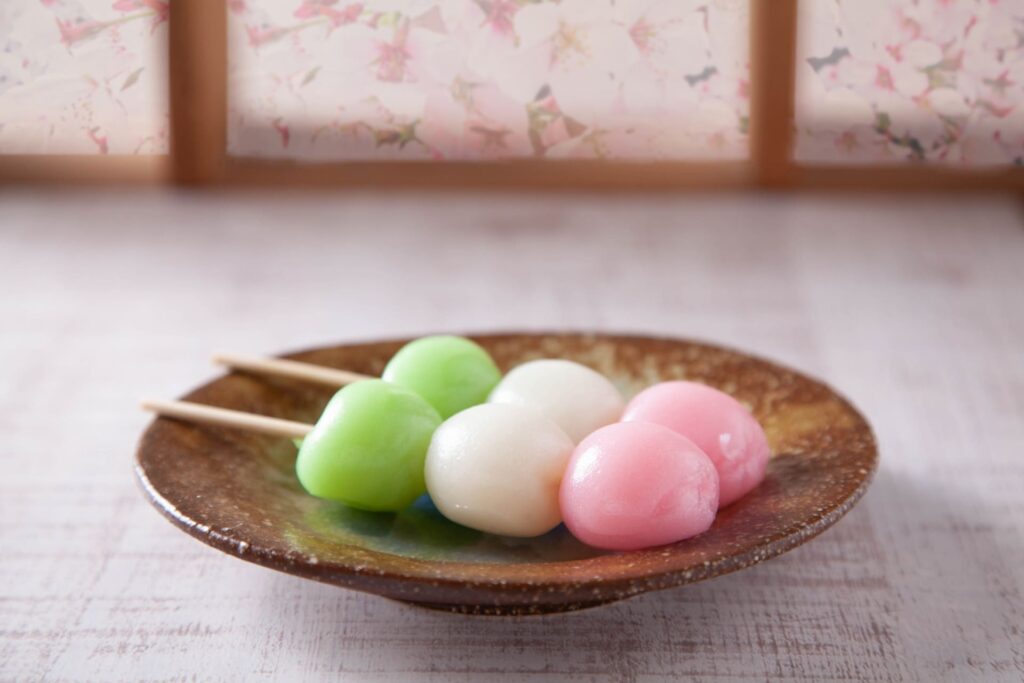
Dango comes in many types! From the pink, white, and green hanami dango to the sweet soy-glazed ones we're making today (called mitarashi dango), there's a whole world of these little treats to explore.
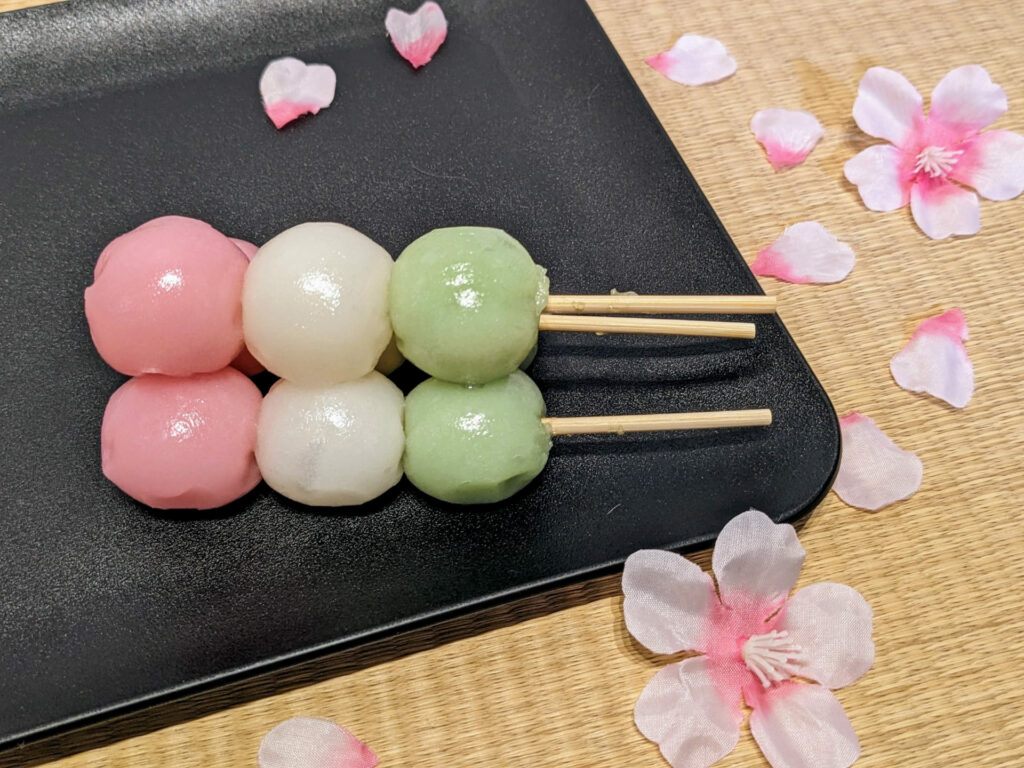
Why are they suddenly all over your feed? Unlike many Japanese desserts that need special tools or hard-to-find items, dango are pretty easy to make at home. The bouncy texture makes for great videos. That sweet-savory glaze creates the perfect "yum" moment that content creators love.
For busy moms, dango offers something special: a fun treat from another country that doesn't turn your kitchen upside down or break the bank. With just a few basic items (many you might already have), you can bring a taste of Japan to your table.
And guess what? They're very budget-friendly! Making dango at home costs about $1-2 per serving versus $5-8 at a shop. That's money you can put back in your family vacation fund!
If you spend any time on TikTok or Instagram Reels, you've likely seen this dango recipe making waves. Unlike old-school recipes that use only rice flour and water, this viral version adds soft tofu for an extra tender texture. It's almost fool-proof - even for first-timers. The videos has millions of views and thousands of comments from amazed home cooks.
What makes this version so great? Normal dango can be tricky to make. The dough gets too sticky or too firm. Adding tofu creates a more forgiving dough that holds together while cooking. It gives you that perfect chewy texture that makes dango so yummy. It's like finding out you can make perfect cookies without needing to cream butter - a total game-changer!
The sauce is equally amazing. It's a glossy, sweet-savory coating that gets slightly crispy when you pan-fry the dango. The mix of soy sauce, sugar, and mirin creates deep flavors. These simple dumplings taste like they came from a Japanese street food stand. Trust me, you'll want to lick your fingers when no one's looking!
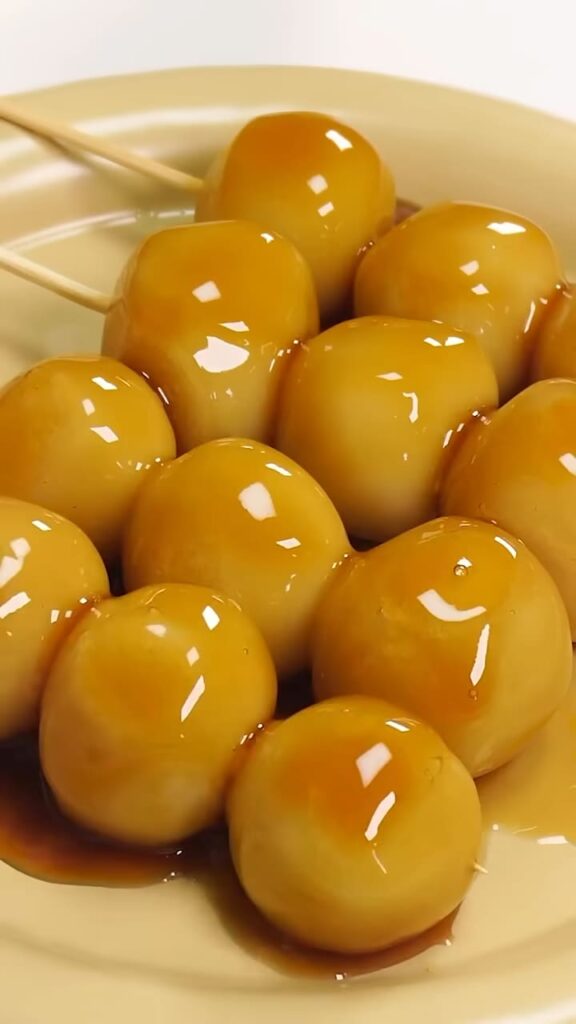
Viewers love how the creator shows a neat trick for getting perfectly round dango. That swirling water method is pure magic for beginners. No more oddly shaped dumplings. This way ensures pretty results even if you've never worked with rice flour before.
For those watching their grocery budget (and who isn't these days?), this recipe is a winner. The whole batch costs about $6-8 to make. It gives you around 20 dango - enough for the family with maybe a few left for your snack tomorrow. Though good luck having any left!
The best part? Hands-on time is under 30 minutes. Most of that is the fun part of rolling the dough into cute little balls - an activity kids actually enjoy helping with. It's perfect for a Sunday afternoon when you want something special but don't want to spend hours in the kitchen.
When you bite into a warm, fresh dango, you're not just eating a snack. You're taking part in hundreds of years of Japanese food history. Dango isn't just a dessert. It's a cultural icon that shows up in Japanese stories, art, and even has its own emoji 🍡!
Dating back to the 700s, dango has grown from a simple offering at Buddhist temples to a beloved street food and family treat. The dango we're making today - mitarashi dango with its shiny soy sauce glaze - started at a tea house in Kyoto. It was first made as an offering at a festival. The five dumplings on a stick have special meaning. Each one stands for elements of human nature.
In Japanese homes, making dango is often a family activity. Recipes pass down through generations. It's like your grandmother's cookie recipe - simple items made into something meaningful through tradition and shared time together. For many Japanese families, the changing types of seasonal dango mark the passing of the year.
What makes dango so special in Japanese food culture is how simple it is. Unlike some fancy Japanese sweets that need years of training, dango is home cooking at its best. Basic items turn into something special through simple methods. It's food that brings people together.
For those of us trying to show our families foods from around the world, dango is perfect. The mild sweetness and fun, chewy texture appeal even to picky eaters. Making them gives you a chance to talk about Japanese culture with your kids. It's like a tasty geography lesson they'll actually want to join!
While stores are full of packaged snacks, there's something deeply satisfying about making these treats by hand. In our busy world of quick meals, dango stands for slow food at its best. Take simple, cheap items and turn them into something special with your own hands.
When you make this viral recipe at home, you're not just following a trend. You're connecting with a food tradition that has brought joy to families for hundreds of years. When travel isn't in the budget, creating real global flavors in your kitchen offers a taste of adventure for your whole family.
While our viral TikTok recipe focuses on mitarashi dango with its tasty sweet-savory glaze, there are many other kinds to try! Once you master the basic method, a whole world of dango awaits your taste buds!
Hanami Dango is maybe the prettiest type. It has three different colored balls on a stick - pink (for cherry blossoms), white (for winter snow), and green (for spring grass). People eat these during cherry blossom season. They look great in photos if you want to up your food pic game.
Mitarashi Dango - what we're making today - has that shiny, sweet-savory soy sauce glaze that gets slightly crispy when grilled. The mix of chewy dumpling and sticky, tasty coating makes these super addictive. Warning: you might need to make double batches once your family tries them!
Anko Dango comes topped with sweet red bean paste. It creates a nice contrast between the plain dango and the sweet, earthy bean paste. If you've had mochi ice cream, you'll know this classic flavor mix.
Kinako Dango is dusted with toasted soybean flour. It has a nutty flavor that's less sweet than other types - perfect for those who like subtle desserts. It's often drizzled with black sugar syrup for added sweetness.
Zunda Dango comes from northern Japan. It has a bright green coating made from sweetened mashed edamame. It's both pretty and healthy, adding protein to your sweet treat!
Goma Dango is covered in sweet sesame seeds. It has a nutty flavor that's very popular in winter months.
For budget-minded home cooks, the beauty of these types is how flexible they are. Once you have your basic items (mainly rice flour), you can create different dango types with pantry basics. Use whatever seasonal items you have on hand.
Many moms find that making dango becomes a fun weekend kitchen project. Kids help mix colors or roll the dumplings while learning about different cultures. It's the kind of cooking that creates memories while sneakily teaching global awareness. Much better than another afternoon of video games!
What's great about exploring different dango types is how they connect to Japanese seasonal traditions. By making different kinds throughout the year, you can create your own family traditions. Show your kids the concept of seasonal eating - something that's central to Japanese food culture but often lost in our shop-at-any-season Western way of eating.
Let's get to the nitty-gritty of dango-making with some hard-earned wisdom. These tips will take your Japanese dumplings from "decent try" to "could sell these at a food fair." After testing this viral recipe many times, I've gathered some key tips that will save you from common mistakes.
Getting the dough texture right is key. It should feel like play-dough - you can shape it but it doesn't stick to your hands. If your dough feels too wet after mixing the tofu and rice flour, add more flour, one spoon at a time. If it's too dry and crumbly, add a tiny bit more mashed tofu. Trust your hands on this - they'll tell you when the texture is just right.
Size matters with dango! For the perfect chew, make balls about the size of a large marble (about 10g each if you want to be exact). Too big, and they'll be gummy in the middle. Too small, and they'll cook too fast and lose that chewy texture. A small cookie scoop can help if you're worried about making them the same size.
The swirling water trick works for a reason. When the viral video shows dropping dango into swirling boiled water, this isn't just for show. It really helps make perfectly round dumplings! The gentle current helps shape the dango as they cook. Use a wooden spoon to make a gentle whirlpool before adding your dumplings.
Know when they're done. The dango will sink when you first put them in the boiling water. They're ready when they float to the top AND have been boiling for about 3 more minutes. Don't rush this. Undercooked dango have a raw flour taste that no amount of tasty glaze can hide.
The ice bath is a must. After boiling, putting the dango in ice water stops the cooking and firms up the outside. This gives you that perfect chewy texture. Skip this step, and you might get overly soft dumplings that fall apart when grilling.
Don't skip the pan-frying! While you can eat dango after boiling, grilling them creates a slight caramelization. This adds depth of flavor and improves the texture. Just a minute or two on each side in a hot pan makes all the difference.
Sauce thickness matters. When making the mitarashi sauce, cook it just until it thickly coats the back of a spoon. If it gets too thick, just add a splash more water and stir until you reach the right thickness. The sauce will also thicken as it cools, so keep that in mind.
Storage tips for busy moms: Fresh dango are best eaten right away. But if you need to make ahead, you can prepare the dumplings through the boiling and ice bath steps. Store them covered in the fridge for up to 2 days. When ready to serve, just pan-fry and glaze them. The sauce can also be made ahead and stored separately. Just warm it gently before using.
For busy weeknight cooking, you can freeze fully prepared (unglazed) dango for up to a month. Just thaw in the fridge overnight, then pan-fry and glaze when ready to serve. It's like having a secret stash of homemade Japanese treats ready whenever a craving hits!
In a world where grocery prices keep rising (seriously, $7 for eggs?), finding budget-friendly global recipes feels like striking gold. That's what makes this viral dango recipe so smart. It turns simple, cheap items into something that tastes and looks like it came from a fancy Asian dessert shop.
Let's break down the cost: A bag of rice flour costs around $3-4 and makes several batches. Soft tofu is about $1.50-2.00 per pack, and you'll only use half for one batch. The sauce items - soy sauce, sugar, mirin, and potato starch - are pantry basics that add maybe another dollar to your total.
All told, you're looking at roughly $3-4 for a batch of 20 dango - that's about 20 cents each! Compare that to shops charging $1-2 PER dumpling, and you'll feel like a money wizard.
For the budget-conscious cook, here are some smart money-saving tips when making dango or other Asian recipes:
Shop at Asian grocery stores when you can. Items like rice flour and mirin are often much cheaper at Asian markets compared to regular supermarkets. If you don't have an Asian grocery nearby, check the international sections of larger stores, which often have better prices.
Make smart swaps. No mirin? A mix of rice vinegar with a bit of sugar can work. Can't find potato starch? Cornstarch is perfect. The recipe police won't come knocking, I promise!
Buy in bulk for items you'll use often. That big bag of rice flour might seem like a lot, but once you taste these dango, you'll be making them regularly. Store it in an airtight container to keep it fresh longer.
Make double batches and freeze half. Your time matters too! Since you already have all the items out and are going through the process, making twice as much takes little extra effort. It gives you ready-to-go treats for future desserts or after-school snacks.
Use up leftover items. That remaining half pack of tofu? Use it in a stir-fry or smoothie later in the week. Leftover rice flour makes great mochi or can thicken Asian-inspired sauces and soups.
What's great about mastering recipes like dango is how they can turn an ordinary family dinner into something special without breaking the bank. While ordering takeout for a family of four can easily cost $60-80 these days, adding homemade dango to a simple stir-fry dinner creates a "restaurant experience" at home for a fraction of the cost.
The best part? These budget-friendly dango don't feel like you're cutting corners. Unlike some money-saving measures that feel like settling for less, these homemade Japanese dumplings are truly better than many restaurant versions. They're fresher, with that perfect texture that comes from being served just minutes after cooking.
There's something deeply satisfying about watching a TikTok recipe video, thinking "I could make that," and then actually doing it in your own kitchen. It's like the modern version of your grandmother teaching you her secret family recipes. Except your teacher is a stranger on the internet with great lighting and snappy editing.
At Spoonful of Asia, we've built our whole approach around this idea. We take the most tempting viral Asian recipes from your social feeds and turn them into doable recipes that work in real home kitchens. Those perfect 30-second videos often skip key details that leave you wondering what went wrong when your version doesn't match up.
What makes recreating viral recipes like these dango so fun is the shared experience. When you make that recipe everyone's talking about, you're joining a global cooking conversation. Your kids think you're cool for once. Your friends are impressed when you bring them to book club. Suddenly that random Wednesday night dinner feels special - all because you tried something new you saw online.
For busy parents especially, these trending recipes offer a perfect mix of new and doable. Unlike fancy baking projects that need special tools or pricey items, many viral recipes (like our dango) use clever tricks and simple methods. They make global cooking easy for everyday cooks.
There's also something empowering about mastering recipes from different cultures in your own kitchen. When travel might be limited by time, money, or other factors, bringing global flavors to your family table creates a sense of adventure. It's like taking a food vacation without the jet lag or expense!
When you serve these dango to your family, you're not just feeding them a sweet treat. You're giving them a taste of Japan and sparking wonder about different food traditions.
The learning aspect is important too. When kids help make recipes from other cultures, they grow to appreciate global traditions in a natural way. They learn that "different" doesn't mean "weird" when it comes to food. It just means new flavors to explore. In today's connected world, raising children who approach new foods with curiosity rather than judgment feels more important than ever.
Perhaps the best part of recreating viral recipes is how they create moments of connection. Whether you're making dango with your children on a rainy Saturday or sharing your success with friends online, these shared cooking experiences bring people together across kitchens, cultures, and countries.
Now that you know all about viral dango-making, you're probably eager to get some rice flour and start rolling those little dumpling balls! Trust me, this is one of those recipes that's as fun to make as it is to eat. Especially if you get some little kitchen helpers involved.
Ready to bring this TikTok sensation to life in your own kitchen? You'll find our complete step-by-step recipe below. It's adapted from the viral video but with all those crucial details and tips included. These make the difference between dango disappointment and dango delight!
The recipe includes exact measurements, cooking times, and all those little tricks we've learned through lots of testing. Someone had to eat all those test batches - the things we do for you! We've broken everything down into easy steps that even cooking beginners can follow with confidence.
While you're rolling up your sleeves to make these delightful Japanese dumplings, remember that cooking is about joy and trying new things, not being perfect. If your first dango aren't perfectly round or your sauce is a bit thin, that's totally okay! Each batch gets better, and even the "imperfect" ones will taste amazing.
Once you've mastered the basic recipe, feel free to get creative! Try adding a drop of food coloring to create rainbow dango that will delight kids. Or try different toppings like kinako (roasted soybean flour) or black sesame seeds for more traditional types. The dango world is your playground once you know the basics!
We'd love to see your dango creations! Tag us on social media with #SpoonfulOfAsia so we can celebrate your Japanese dessert wins. Please share this recipe with friends who might be scared of international cooking. Showing them how easy these trending recipes can be is part of our mission at Spoonful of Asia.
Remember, the joy of recreating viral recipes isn't just in the eating (though that's definitely a highlight!). It's in the process of bringing something you've only seen on a screen to life in your own kitchen. There's real satisfaction in telling your family, "Yes, I made those Japanese dumplings from TikTok, and yes, they taste even better than they look!"
| Mitarashi Dango is a beloved Japanese sweet made with chewy rice flour dumplings and coated in a glossy, umami-packed soy sauce glaze. Unique Asian dessert, this recipe is simple, gluten-free, and utterly delicious. Serve them warm for the best experience! |
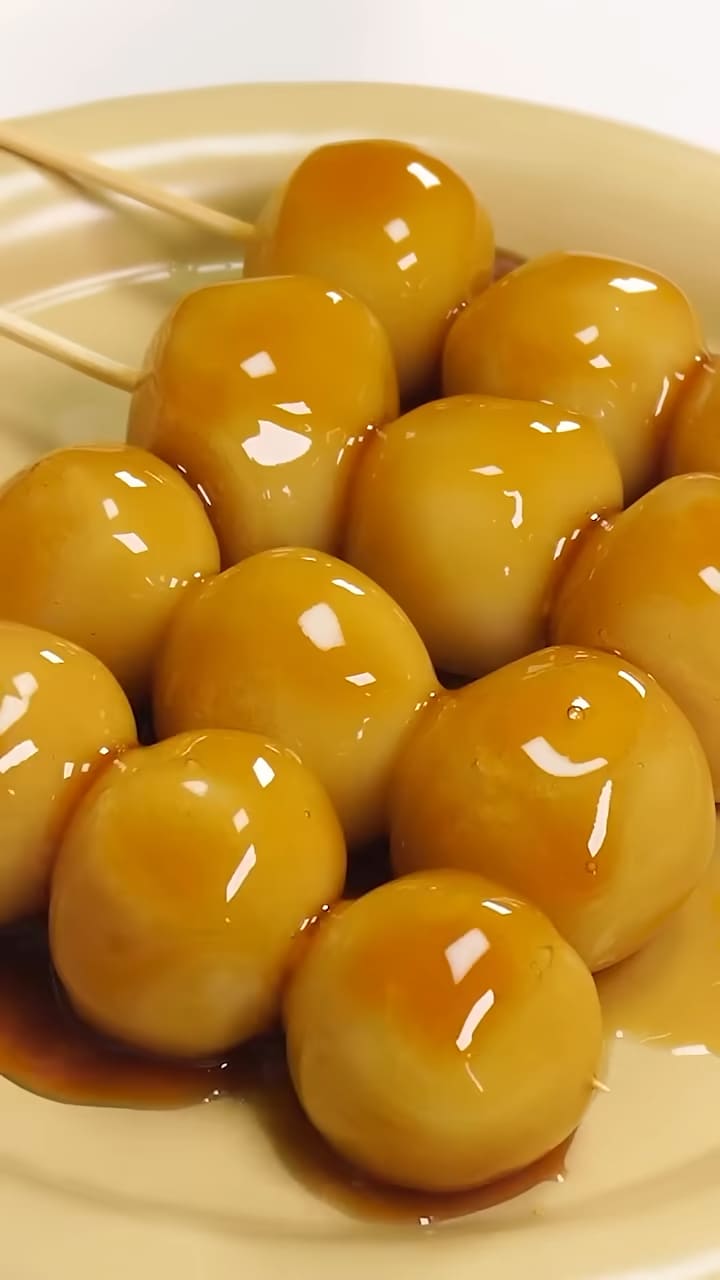 Heat a pan over medium-high heat. Grill the skewered dango until lightly browned on both sides. Brush generously with the glaze and serve warm.
Heat a pan over medium-high heat. Grill the skewered dango until lightly browned on both sides. Brush generously with the glaze and serve warm.